The moving parts of a CCR are the bridge, the trolley and the gear.
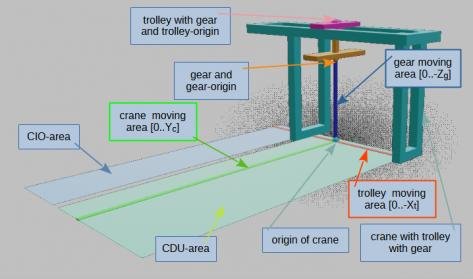
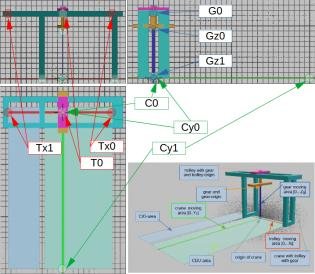
The gear may move mainly up and dowm (Z-direction) relativ to thetrolley, which is parent of the gear. To make it possible pointlytweaking the gear to the container the hear shoul be able to move alittle bit in x- and y-direction (X-direction) additionally. And thegear may rotate (minimum -90° .. 90°). For this all the mathematicsto calculate the position of any part is position-verctor addition.And the Z-Rotations could be calculatet by adding or subtracting theZ-Rotations of the parts.
Let us assume, that all parts of the CTS have stored the position- androtation-data relativ to the containing object. Ralativ means, thefor omitting this data the „inner“ object thinks, that the„outer“ objects position is on world origin Pxyz(0,0,0) withrotation Rxyz(0,0,0). Our rotatable objects may only rotate around Z.
Here are some pictures to visualate the parent-child-concept of the someparts of a aCTS. I hopeit makes it more visible to you.
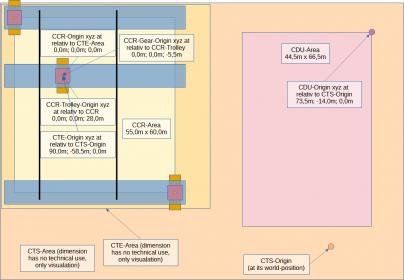
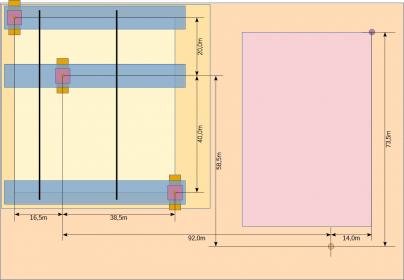
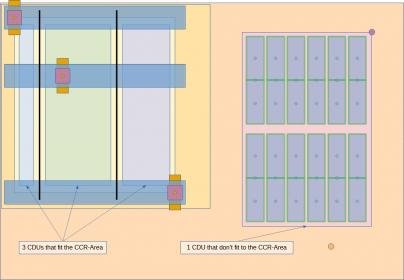
The trolley moves the gear left-right-sideward (X-direction) an thebridge moves the trolley with the gear forward-backward(Y-direction). This all fits to a bridge crane.
But there are crane types with crane booms too. One example is thekalmar.
They move some other ways and may have more moving parts. And the mathematicts to that needs more trigonometric functions.
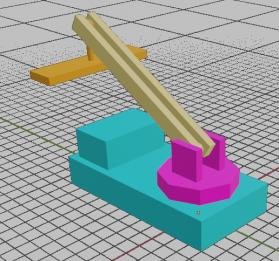
I will explain something to that in one of the following posts. But for nowhave a look only at bridge-cranes.


The gear may move mainly up and dowm (Z-direction) relativ to thetrolley, which is parent of the gear. To make it possible pointlytweaking the gear to the container the hear shoul be able to move alittle bit in x- and y-direction (X-direction) additionally. And thegear may rotate (minimum -90° .. 90°). For this all the mathematicsto calculate the position of any part is position-verctor addition.And the Z-Rotations could be calculatet by adding or subtracting theZ-Rotations of the parts.
Let us assume, that all parts of the CTS have stored the position- androtation-data relativ to the containing object. Ralativ means, thefor omitting this data the „inner“ object thinks, that the„outer“ objects position is on world origin Pxyz(0,0,0) withrotation Rxyz(0,0,0). Our rotatable objects may only rotate around Z.
Here are some pictures to visualate the parent-child-concept of the someparts of a aCTS. I hopeit makes it more visible to you.



The trolley moves the gear left-right-sideward (X-direction) an thebridge moves the trolley with the gear forward-backward(Y-direction). This all fits to a bridge crane.
But there are crane types with crane booms too. One example is thekalmar.
They move some other ways and may have more moving parts. And the mathematicts to that needs more trigonometric functions.

I will explain something to that in one of the following posts. But for nowhave a look only at bridge-cranes.
